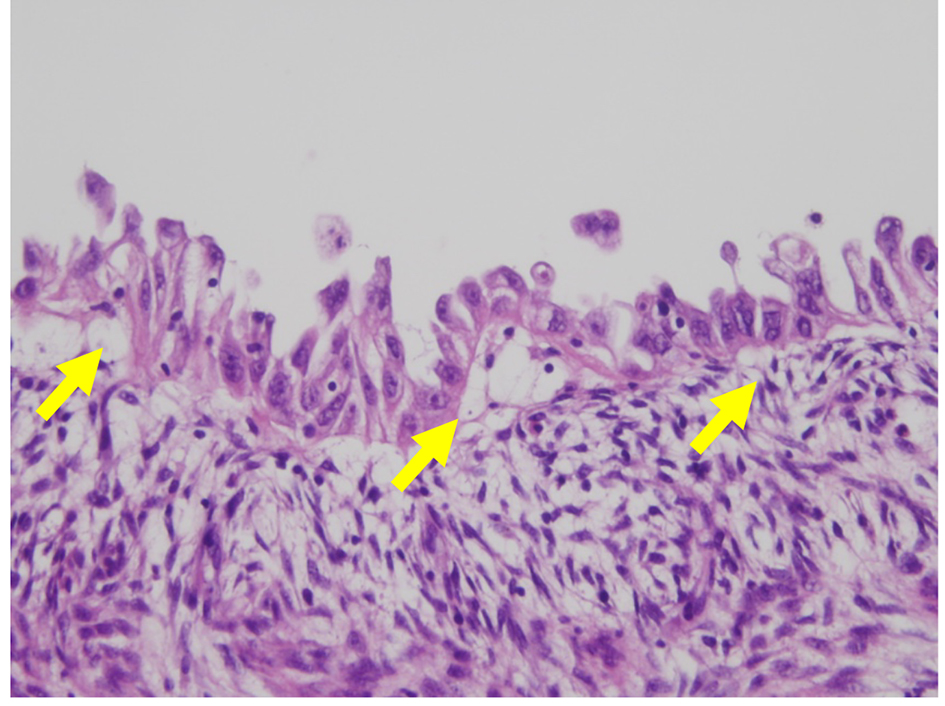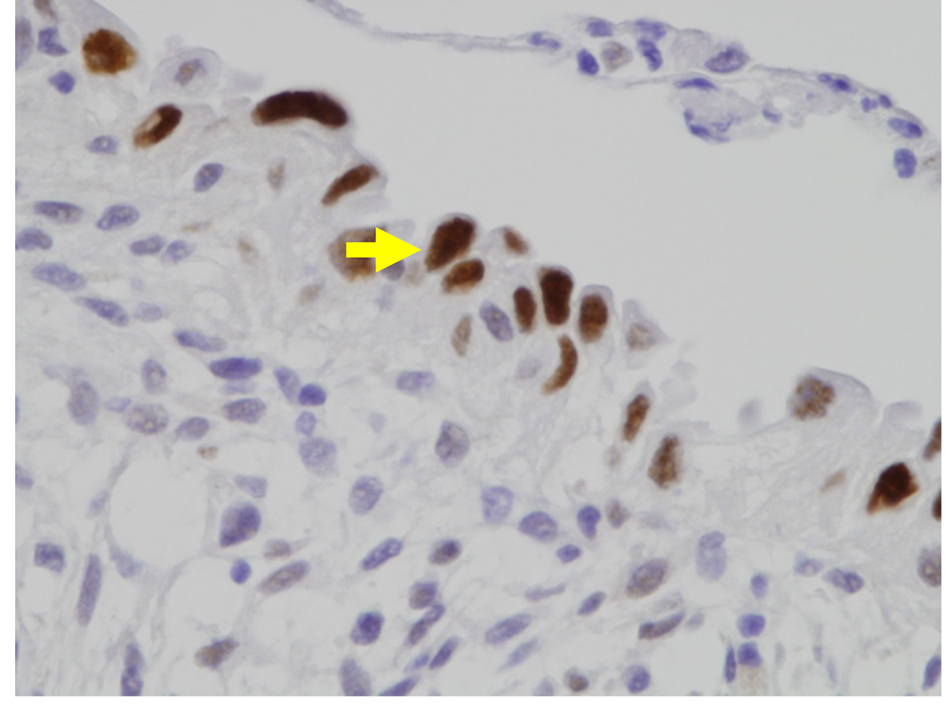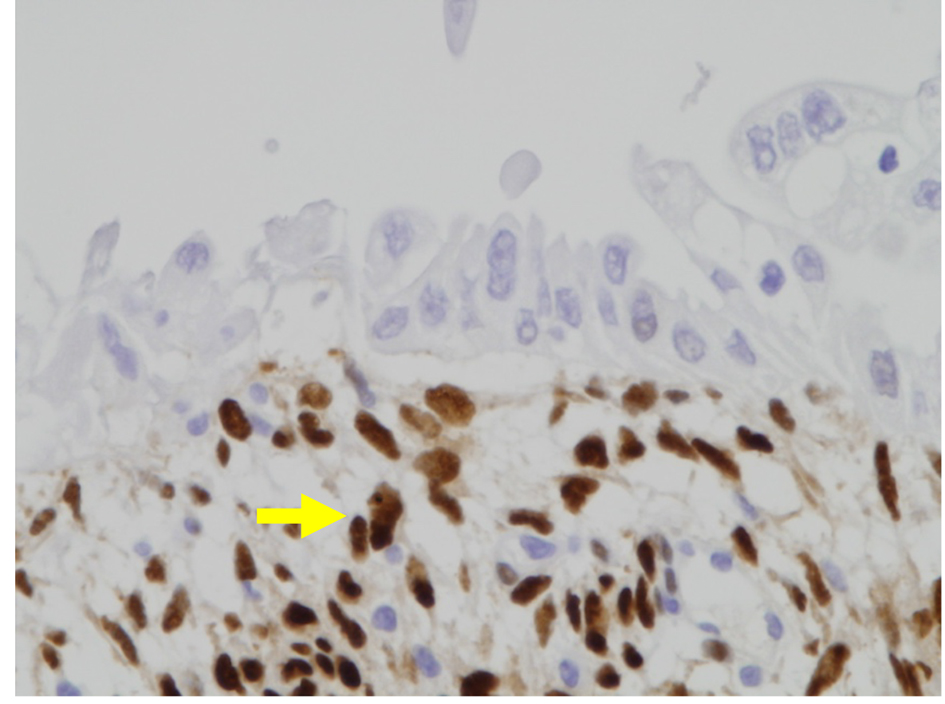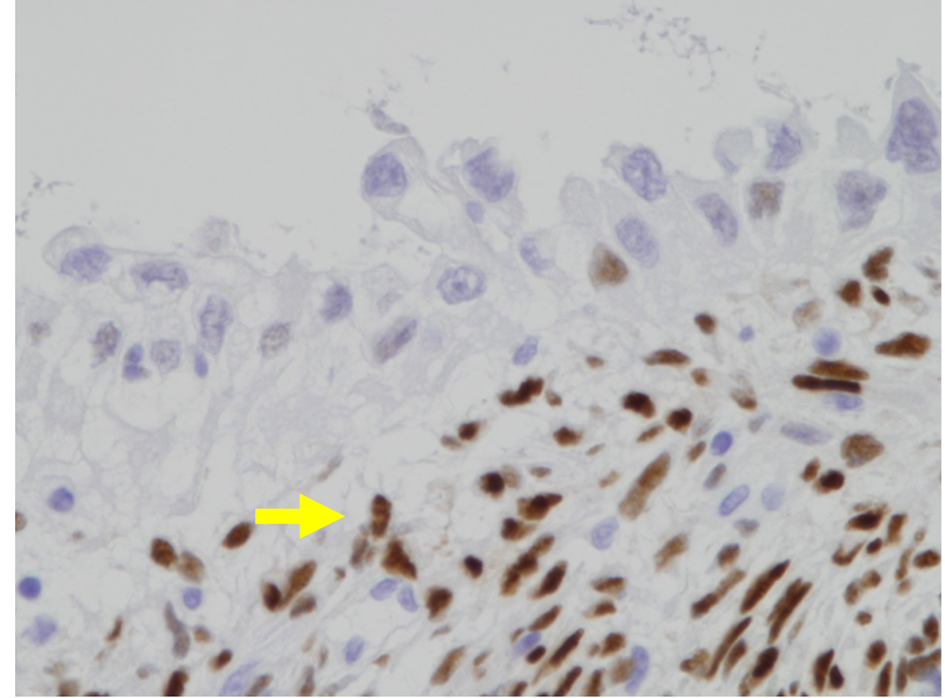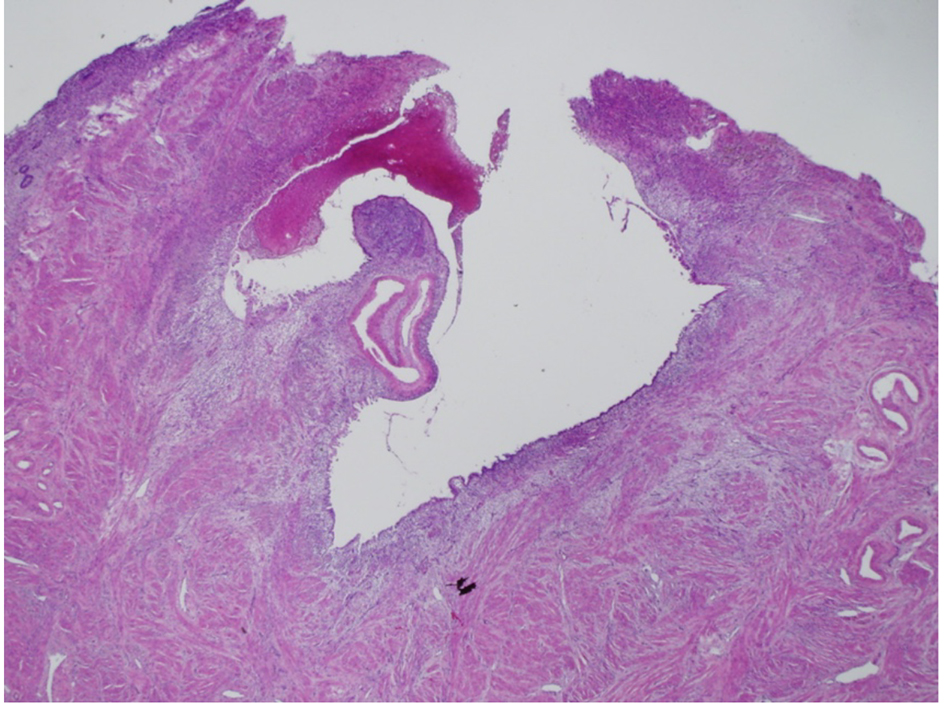
Figure 1. Histological findings of polyp from the posterior uterine wall endometrium. A cystoid tumor spanned the uterine lesion by forming confluent glands (H&E stain; original magnification × 40).
| Journal of Clinical Gynecology and Obstetrics, ISSN 1927-1271 print, 1927-128X online, Open Access |
| Article copyright, the authors; Journal compilation copyright, J Clin Gynecol Obstet and Elmer Press Inc |
| Journal website http://www.jcgo.org |
Case Report
Volume 6, Number 2, June 2017, pages 49-52
Serous Endometrial Intraepithelial Carcinoma: Case Report and Literature Review
Figures

